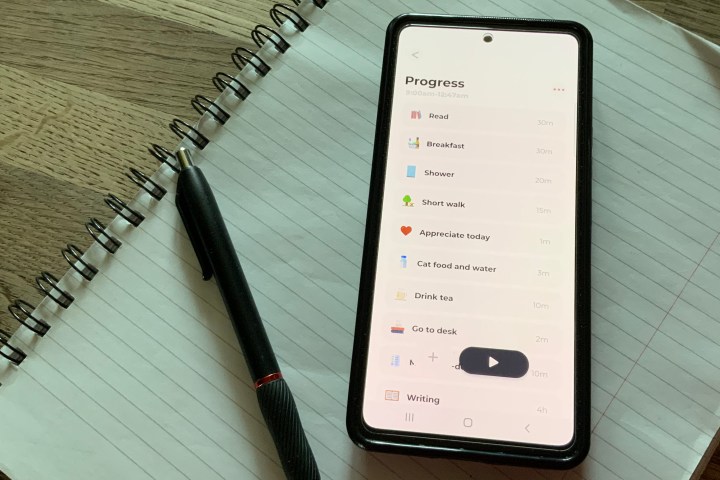I have spent nearly my entire life thinking I was bad at, well, everything. It turns out it was actually ADHD — something I was diagnosed with later in life. I’ve never learned the necessary coping mechanisms to organize myself and function like others might have in their formative years.
Since then, I’ve learned that I can structure my thoughts and actions with the help of apps. I won’t remember everyday tasks, but the apps do. Together, they provide me with the help I need to function without a second thought.

Rather than look for a “top 10 best ADHD apps list” on Google that doesn’t actually dig into how the apps can truly help me, I looked to the many others suffering from the same issues as myself. All of us raised the same question: How do I live like this?
What I needed
Before I even knew I had ADHD, I tried to control my lack of organization, ever-present urge to procrastinate, and forgetfulness by writing notes to myself as reminders. This ended poorly, as I then had an outrageous number of papers lost about the house, in my pockets, or into the void where specially selected socks go in the washing machine’s version of Narnia.
I tried the Notes app on my phone for years. It was better than paper, but I still ran into the issue where I would create a lot of notes, and none of them had structure. They would mix between deadlines, ideas, chores, and reminders. Because of that, they became a job of their own just to sort through. This would, in turn, cause me to procrastinate dealing with that mess. To this day, I still haven’t looked at them.
Living like this made me constantly frustrated. I needed a uniform set of tools to keep track of my chores, remind me constantly of deadlines, and take and organize my notes. I needed apps that would divide my thoughts into work, chores, reminders, and other little tidbits (like remembering that nutrition mattered).
Routinery for daily tasks
Despite finding a few duds, I’ve fiddled with some apps that people with ADHD said helped them. After trying these apps, I actually feel hopeful.
The app with the most rigidity concerning organization is Routinery. It does exactly what I hate to do but need so badly. Daily tasks and chores have always been my bane, sometimes causing me to waste hours staring at the clock and avoiding work. This adds urgency to the tasks that my ADHD needs to actually focus on them.

After some input on my end, Routinery contained my ideal daily routine down to the exact minute. This included remembering to drink water and taking breaks when I hyperfocus on a hobby (ever spent 14 hours without a break drawing until 8 a.m.?). Sometimes I feel overwhelmed by the schedule that’s planned, but I’ve learned I can look at the list throughout the day to remind myself of what I have done and what I didn’t yet do.
HabitNow to build habits
In a similar vein, HabitNow does similar structuring for my life but more with habits. Of which I have none. With HabitNow, I could easily throw in habits I wanted to reinforce and check them off as I did them.
Every day it would refresh and remind me to do them again. In the past with just notes, even when I managed to remember to try and keep up habits, I didn’t have anything or anyone holding me accountable. HabitNow reminds me of my set deadlines for such tasks and keeps pestering me until I check them off. It takes off a ton of mental strain and anxiety by remembering everything for me.
Monday.com organizes my work

In terms of organizing work, Monday.com is perfection. It organizes and shows me all my current deadlines. Including finished work tasks that I might need to check again. The part that really scratched that itch for my ADHD brain was being allowed to include particular notes on each work task I had.
It was also incredibly easy to navigate and set this all up. I actually enjoyed filling it out since it was such a smooth process. I cannot stress enough how incredibly well Monday.com structured all my work. I still open the app every few hours just to see what I have upcoming and what I should be working on.
Forest keeps me on task
One app I greatly appreciated didn’t do so much to organize my life. Instead, it helped control me. That app is called Forest. You plant a little tree and the app stops you from exiting it to procrastinate by telling you that the seedling will die if you leave before the timer is done.
I don’t know about others, but that is more than enough leverage to convince me to pause and finish my current work. The app gives you the payoff of collecting and seeing that tree you grew in your garden. You can also see all the trees you’ve grown, and how much you were able to focus yourself. Since people suffering from ADHD like me need more visual representations of their actions, I found this inspiring. I was reminded that I did well for myself over and over again in little ways.
Lifesum helps me take care of my body

Food and dietary organization isn’t something a lot of people consider, especially when that person has ADHD. Lifesum, one of the best fitness apps of 2022, was one I saw others recommending for a heap of reasons. A lot of dietary or food organization apps all offered the same features with slight variations, but the one app I fell in love with was the cohesive mix that Lifesum offered.
I could gather recipes, meal plan, and build a grocery list that I could check off as I shopped. But the thing I loved most was the food diary and progress meter. It kept track of calories like any other dietary diary, but this calculated how much carbs, protein, and fat I should be having for my body and knew how much each food I was eating was adding to those needs. Together, the app was everything I needed concerning food.
Due to ADHD, I — like many others — suffer from the fact that I will hyperfocus on comfort food for texture or taste. This sometimes happens at the expense of me ignoring nutrition for weeks until my body physically tells me I’ve made a great many mistakes. At one point, I actually gave myself anemia from my dietary choices, so having something to help track if I’m going overboard is almost a literal life-saver.
What helped and what didn’t
The biggest help toward organizing my life was structuring each part of my needs to the right apps. There is no one app that can do it all, and if one could, it would be so complicated that I would just outright give up on it.
Instead, I let Lifesum help me with food and keeping up with the needs of my body. Monday.com was perfect at keeping my work in check and ever visible. I’ve begun building life-changing habits with HabitNow and I don’t intend on stopping anytime soon.
Routinery built up my daily schedule so I could pick it up as I needed. The only thing I struggle with still is that it’s a little too rigid in planning out every little thing I do. With my everyday schedule, I almost never can follow plans down to the minute. Even more so with my ADHD manifesting in the way I sidetrack constantly.
All of that said, there’s something exceptionally magical about being able to take care of myself without depending on others. I finally feel like I’m a little more able to tackle the world and just live. This newfound stability and accountability is a constant reminder of what I should be doing so that I don’t have to punish myself to remember things my mind simply cannot keep up with.


